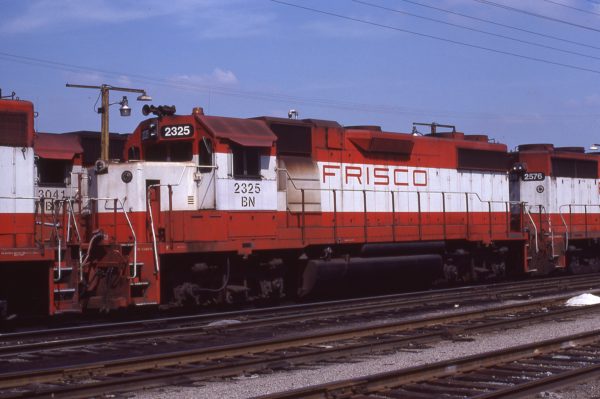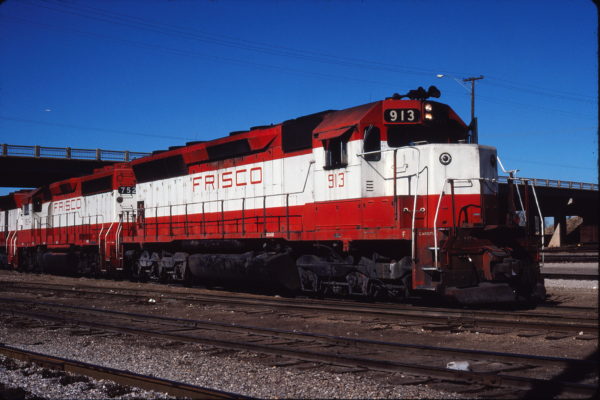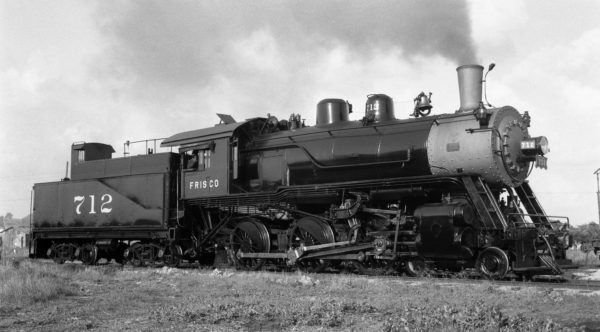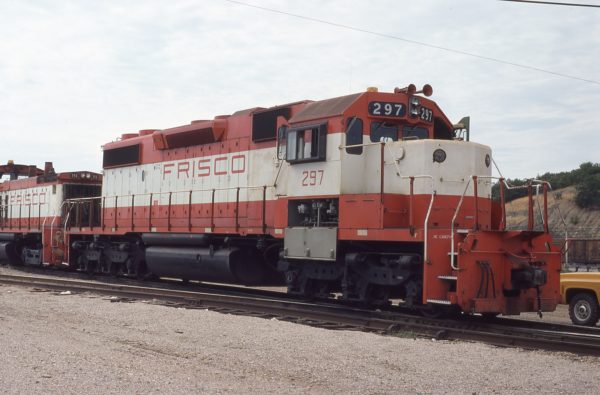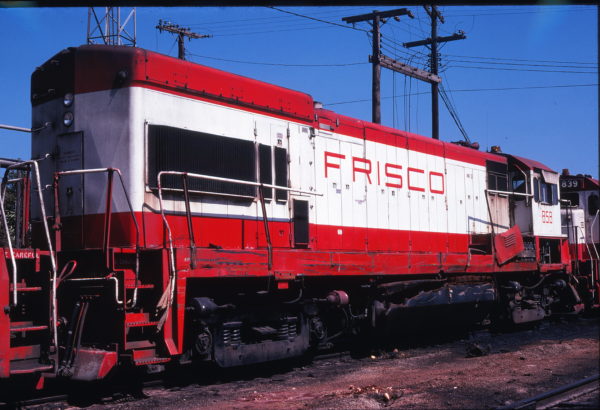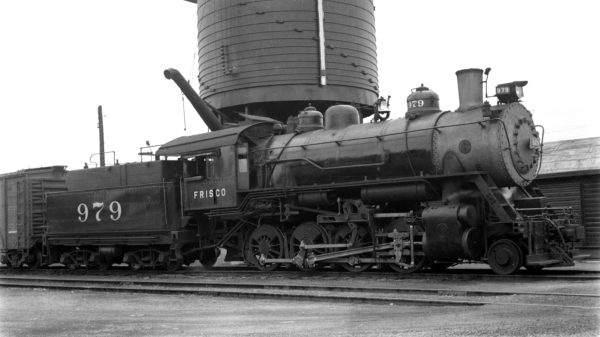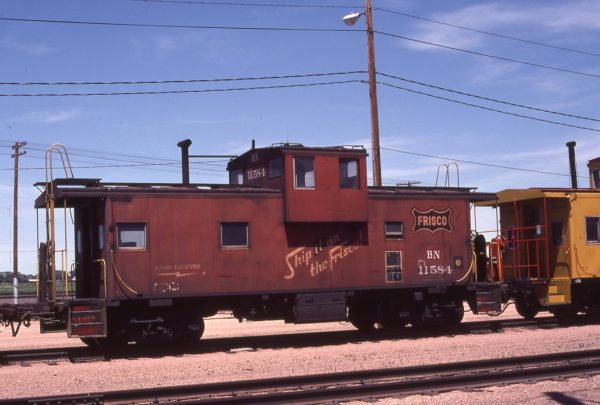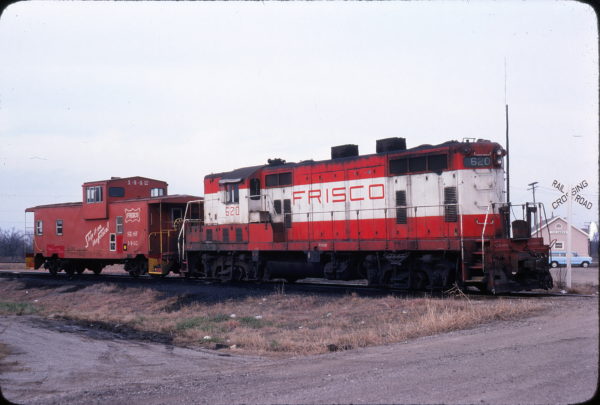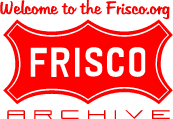Monthly Archives: October 2014
SD45 913 and GP40-2 752
4-6-0 712
SD38-2 297
GP35 717, U25B 808 and GP38-2 692
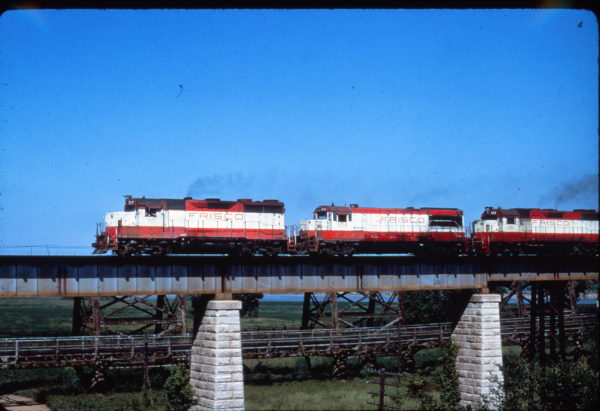
GP35 717, U25B 808 and GP38-2 692 crossing the Mississippi River at Memphis, Tennessee on August 8, 1976 (Al Chione).
U30B 858
2-8-0 979
Caboose 11584 (Frisco 1256)
Two-Bay Hopper 86941
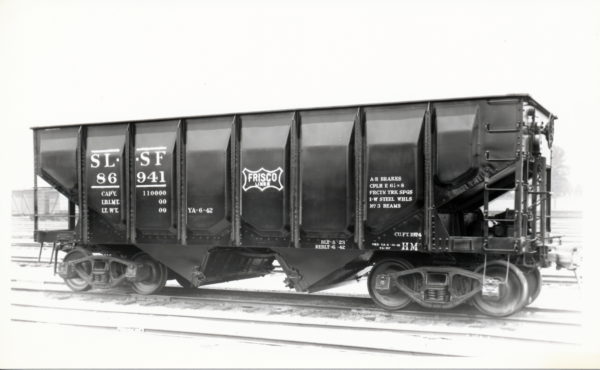
Two-bay hopper 86941 at Memphis, Tennessee in June 1942.
Note that the car was built in May 1923 and rebuilt in June 1942.
This photograph was taken at the Frisco’s freight car repair shops at Yale Yard (YA). At this time these shops largely specialized in building and repairing the railroad’s open top cars including gondolas and hoppers.
When originally built in 1923, this was a rib side open top hopper. It is a clone of an United States Railroad Administration (USRA) two bay hopper car design. Frisco originally owned 3,500 of these then standard 30 foot length twin hoppers.
This car has just been rebuilt with replacement panel sides. These were sometimes referred to as blister sides. These panels were designed to increase the car carrying capacity by approximately 2%. Union Metal Products and Standard Steel Railway Supply are among the manufacturers of the panels.
Over time, these replacement panels fell out of favor. Due to their shape, the lower portion tended to retain moisture and rust out. Also, due to their multiple unique shapes it meant keeping a full inventory of car panel sets for repairs, which became an undesirable inventory expense when compared to flat sheet steel.
In addition to having been rebuilt, the car is freshly painted. It will very soon be moved to the yard’s weigh scale. Shortly afterward the final weigh data stencil will be painted to add the car’s load limit (LD. LMT.) and empty light weight (LT. WT.).
Special thanks to Mark Davidson.
